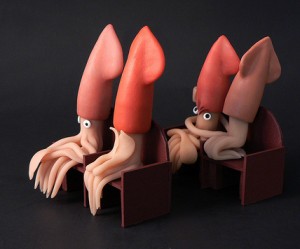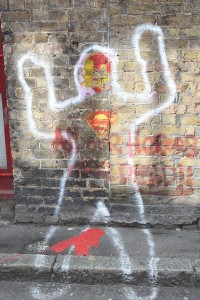Dating Survival Guides Part 3: Safety vs. Strength
If dating seems like an ordeal, you are not alone. I’ve heard many versions of “I’m not dating because it sucks” from all sorts of people; gay, straight, men and women of all ages. I’ve expressed that sentiment myself more than a few times, but I also know that it doesn’t HAVE to be that way. Each of the archetypal guides in this series can help illuminate why dating can be difficult and how we can experience the process in a more grounded, wholehearted way.
This next archetypal guide is a biggie – it’s probably the main reason dating can be painful, confusing and un-fun. Just stay with me here because our guide to less vexing and more wholehearted dating in this edition is the archetypeA universal pattern of motivation and behavior. of the Victim.
What did you say woman? Victim?!
(Like I said – hang in there.)
The BIG THING to remember is that the Victim has two sides to it and is all about safety, strength and boundaries. It remains neutral until we feed one side or the other with thoughts, ideas and actions.
Keywords: Pain, Fear, Blame This is the part of us that is consciously or unconsciously hurt, defensive, pissed off, fearful, vengeful or sad. It’s a tender part that needs care and compassion but it also needs to know it’s not the only game in town. To identify with only the unempowered Victim is how we can end up in dating suckland. Being in the mindset of fear skews our vision and makes for hasty decisions (fight or flight dating anyone?). This is where being present and paying attention to what’s going on in our minds and hearts without judgement can keep us grounded.
Keywords: Strength, Resilience, Courage I like to call this the Victorious part of us but it’s still a part of the Victim – we can’t really have one without the other. This is the archetype of working with the fear, letting stuff go, setting healthy boundaries and getting on with life more informed and stronger than we were before. The empowered Victim is also a wellspring of compassion – for self and others. It opens the door to maintaining vulnerability as a strength, not a weakness. If that sounds like an oxymoron, think of it this way, our ability to truly connect (be vulnerable) allows us to be who we really are beyond the fear we might feel (strength).
Dating means putting yourself out there in a way that could bring old wounds and insecurities to the surface – something most of us instinctively avoid. Hence the Victim archetype rearing it’s head in the middle of our single life saying it’s not safe out there. Here’s the thing though, if we let our fears wall all that stuff up in order to feel safe, we are also walling out what we most deeply want – love and connection.
“A deep sense of love and belonging is an irreducible need in all women, men and children. We are biologically, cognitively, physically, and spiritually wired to love, to be loved and to belong. When those needs are not met, we don’t function as we were meant to. We break. We fall apart. We numb. We ache. We hurt others. We get sick.” ~Brené Brown from The Gifts of Imperfection
Love, if it is real, will never be completely safe because it requires vulnerability, which is to say that the soft gooey center of us could get squeezed and maybe not pleasantly so. In order to truly love, our shields have to come down for a connection to be made. This is true of platonic relationships as well but dating can feel like the stakes are much higher.
“No human being has ever lived without knowing heartbreak, and to accept that truth is to give a merciful gift to ourselves.” ~David Whyte
Actively working with our internal Victim can help us cultivate the strength, resilience and spaciousness to experience dating in a whole new way. How we relate to our internal Victim resonates out to how we treat other people, including our potential love partners and sets the tone for our future relationships.
Here are some ways the Victim can be a guide to dating where we feel stronger, more present and grounded:
Know Your Ropes
Understanding and developing emotional boundaries is huge topic and there are many resources to support more learning so I’ve provided a few below.
Boundaries vs. Barriers by Pema Chödrön
Shadow Boxing
1) things are not always as they seem
2) you are human and do all sorts of things that might not be intended
3) berating yourself does not help anything (in fact neuro psychology research shows it can make things worse).
Self-vicitmization is a call for self-compassion. Once you’ve stopped beating yourself up you will know what to do next with much clearer vision. You will also have more compassion for those you are dating.
Don't Go It Alone
Whether for physical or emotional safety I recommend a ‘date buddy’; someone you can trust to talk something out with and check in with to let them know where you are going and with whom on a date. Our parents might not wait up for us anymore but it’s nice to know someone has our back. I’m blessed to have two date buddies (a man and a woman) and it really, really helps. I get the benefit of having access to both the male and female perspectives on things and get to support them on their dating adventures as well.
Being present to what comes up with the Victim in dating also reminds us that we can call on resources and helpers in the form of Mentors, Therapists or Groups where we can share our experience and receive support.
Avoid Reruns & Red Flags
This reminds me of a scene in ‘When Harry Met Sally’ when Carrie Fisher’s character says “You’re right, you’re right, I know you’re right – he’s never going to leave her.” about the married man who is always proclaiming he’s going to leave his wife to be with her but never does. The Victim can help us recognize when we get into an unhealthy pattern and need to make some different choices or at least look clearly at a situation.
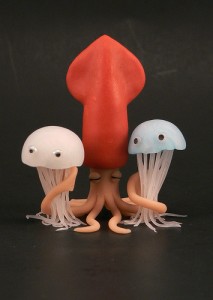 Although dating can bring uncomfortable things up, an honest and compassionate relationship with the Victim means we can be stronger, more loving people for the difficult lessons and heartbreak we’ve been through. My experience with cultivating the lessons of the Victim in relation to dating has helped me immensely. I never thought the process could actually be empowering and compassionate, but it can be and that is what I hope to share with you. Please comment, share, Tweet and link this article if others that you think might benefit. I love when you do that.
Although dating can bring uncomfortable things up, an honest and compassionate relationship with the Victim means we can be stronger, more loving people for the difficult lessons and heartbreak we’ve been through. My experience with cultivating the lessons of the Victim in relation to dating has helped me immensely. I never thought the process could actually be empowering and compassionate, but it can be and that is what I hope to share with you. Please comment, share, Tweet and link this article if others that you think might benefit. I love when you do that.
Dating Survival Guides Part 2: You Are Enough
They say to always lead with your strength. I’m going to lead with one of my weaknesses – sometimes I feel like I’m not enough. Not smart enough, pretty enough, rich enough, thin enough etc. Basically, take any positive quality and put ‘not’ in front and ‘enough’ behind it and I can, at some point, feel that this is so. It’s a type of nefarious self-judgement that most people can identify with and it can make dating un-fun and stressful. These self-judgements can take over and have us thinking that inadequacy is the only possible reason why we aren’t meeting that great guy or gal. And here’s the thing – a habit of believing ‘I am not enough’ does influence our dating experience and who we meet. Let me explain by wrapping it in the context of the archetype at play here.
Not-enoughness is the purview of the Prostitute archetype, which also goes by the name of the People Pleaser, among others. The Prostitute is symbolic of how we negotiate our integrity and self worth. The moment we begin to doubt our worth is a sign that the unempowered Prostitute is hanging out on our psyche’s street corner. It also encourages us to pretend we are something we aren’t because lack is crowding everything else out. It also means that everyone else is more important than we are. This only leads to more heartache.
There is a way to enable this archetype to work FOR us instead of selling our happiness out. Begin by noticing when you engage with the pattern of the Prostitute. Any thought that says ‘you are not enough’ is the archetypal voice of the unempowered Prostitute giving out bad information. Period. You ARE enough. The voice of the empowered Prostitute reminds you that you are enough as you are right now – an imperfect and amazing person, both. This doesn’t mean that there aren’t things you might want to work on, it means that you aren’t starting with a deficit.
Let me illustrate with some common dating scenarios and how the Prostitute archetype can show up in both unempowered and empowered ways:
You've met someone you like.
- Worry that they won’t be interested in you because you are inadequate in some way.
- Allow a list of ‘not-enough’s’ to cascade down the screen of your mind like the numbers and letters in the Matrix.
- Get neurotic about whether you should contact them.
- Check every ten minutes to see if they have called, texted or emailed you first.
empowered / innate worthiness
- Realize that the ‘not enoughs’ are not true and it’s a choice to identify with those thoughts or not. Besides all those crappy thoughts give you a headache.
- You are who you are ‘as is’ and you want to be with someone who accepts and cares for all of you.
- Call them within a time that makes sense and is respectful, in the mean time – enjoy yourself!
- Understand that your value is innate and not based on what other people think.
- If he/she isn’t into you, it is in no way a value judgement of who you are.
Dating someone who isn't good for you.
*Not good for you* generally means they don’t treat you well, take you for granted, put you down or in other ways are not positive for your well being.
unempowered / sell-out
- You keep dating them because you figure you can’t get anyone who is good for you because you aren’t ____ enough.
- You decide there are too many things you lack and it’s better to sell out than be without a date.
- You think that because you are inadequate and they are inadequate you somehow belong together.
empowered / worthy
- Respectfully and compassionately let your unhealthy relationship go (aka break up).
- Notice you spend way more time with the ‘not enough’ thoughts than you do with the truth of who you are and start reversing that situation.
- Spend time doing things you enjoy instead of worrying about Saturday night.
- Realize that dating someone does not make you any more or less valuable as a person.
Dating someone you aren't into.
unempowered / settling
- It’s nice to have someone be nice to you.
- They pay for dinner and/or provide company on Saturday night.
- No one else is on the horizon.
empowered / worthy
- Realize it’s not fair to anyone to stay in a relationship because you feel bad about yourself.
- Be the person who is nice to you.
- Realize that dating someone does not make you any more or less valuable as a person.
- Respectfully and compassionately let the relationship go (aka break up).
- Notice when you spend more time with the ‘not enough’ thoughts than you do with the truth of who you are and start reversing that situation.
Playing Hide and Seek
- Wanting to share a part of yourself with your date/boyfriend/girlfriend but not doing it because they might judge you as not being ____ enough.
- Pretending to have traits that you don’t so they will like/love/accept you? (“Oh I love rock climbing” you say to your date when internally you are shuddering at the idea.)
- Saying yes to or asking for another date when you don’t want to.
- Saying you will call when you don’t intend to.
empowered / worthy
- Notice that you want to be known for who you really are and hiding a desire to share something about you is already a rejection.
- Your worth and love-ability are based on who you are and not whether you have the same interests as your date. You can show a genuine curiosity about their interests without having to fake enthusiasm.
- Acting on what you really want and being honest bestows respect and care on both you and your date.
Did you notice that the empowered sides of these scenarios were more loving, respectful, honest and authentic? That’s exactly who we are without the low worth rhetoric and those qualities are SO very attractive! The habit of thinking ‘not enough’ leads to more of the same; it’s focused on settling for whatever we can get which moves us farther and father away from what we actually want. Understanding that you are enough makes space to focus on what you really want in a relationship and changes the dynamic of choices in who you attract and engage with.
There are many books that have principles and stories that can help re-orient the Prostitute archetype from it’s low energy state to one where you hold your head high and stop trading away your innate fabulousness for anxious worries and low self worth. The wildly popular book from a few years ago, He’s Just Not That Into You highlights this perfectly and delivers it with a with a sizable dose of sharp candor. It applies to anyone working with the Prostitute archetype, which is pretty much everyone except for maybe the Dalai Lama.
“Being lonely … being alone … for many people … sucks. I get it, I get it, I get it. But still I have to say that yes, my belief is that being with somebody who makes you feel crappy or doesn’t honor the person you are is worse.” From He’s Just Not That Into You by Greg Behrendt and Liz Tucillo
The empowered Prostitute holds him or herself with compassion and value, not higher or lower than anyone else but on the firm 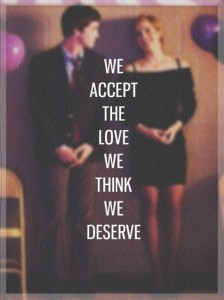 ground where we can meet others in the same way. It’s the same fertile ground where great relationships can grow. Learning how these internal archetypal patterns play out, can bring us back to center with compassion that begins with ourselves and inevitably out to those around us. And really what could be more attractive than that?
ground where we can meet others in the same way. It’s the same fertile ground where great relationships can grow. Learning how these internal archetypal patterns play out, can bring us back to center with compassion that begins with ourselves and inevitably out to those around us. And really what could be more attractive than that?
Part 1 of Dating Survival Guides sets up the process of engaging with these patterns with mindfulness and self-compassion. This recent article is a brilliant essay on the power of this archetype and how we compromise for love.
Victim-Victorious
Let’s consider for a moment that we all have a container in our psyche that holds the entire history of our being wounded: betrayal, abandonment, shame – the whole painful enchilada. This same container also holds the story of our healing: past, present and future. The archetype of the Victim is our guide through these storylines and shows us either a heroic triumph or an exasperating epic that never seems to end. The difference being which side of the pattern we pay attention to.
The Victim, like the rest of the survival archetypes has a bad reputation which might be why it’s easy to spot in others but sometimes difficult to own in ourselves. This bad rep is due to most of us only seeing the unempowered side. The unempowered version of the Victim is stuck, complains about how they have been wronged and are convinced that they had little to no bearing on the outcome of the wounding incident. We’ve all known “Debbie Downers” who incessantly complain about everything and re-frame their experience to get attention or sympathy. Often times this is seen as the Martyr which shares a good bit of DNA with the Victim, but lacks the element of witnessing a larger truth. The unempowered Victim will hand everything over and expect someone else to ‘fix it’. The balance of power lies outside when the Victim shows up in it’s shadow form.
Unempowered Victim-speak
“It’s your/their fault.”
“It’s all my fault.”
“I’m always getting hurt.”
“No one understands me.”
“I didn’t have a choice.”
“This always happens to me.”
Conversely, the empowered Victim has an intimate understanding of their own trajectory of having been wounded and what it took (or will take) to work with it to come out on the other side stronger and more wise than before. Their power remains within them even if they ask for help. Help for the empowered Victim is not handing the problem over to someone else but to actively engage to work through an issue with some assistance.
Empowered Victim-speak
“I made a mistake, now I’m going to…”
“This is really hard but I can do this.”
“I’m going to need some help with this.”
“I’m getting back in the game.”
“Live and learn.”
Spotting this pattern as it emerges allows for a broader range of choices where one can decide which side of the Victim card they want to play. Recognizing that the Victim is an archetypal pattern that all humans share can be a first step to take the sting out of a situation and make room for real compassion. After all, compassion is one of the things we seek when we’ve been hurt. Recognition and attention to the situation seen first as a pattern also points us toward discernment and wisdom instead of harsh judgement which can just exacerbate the pain of the situation.
The richer more enlivening place to draw from is that of the path of healing, which is to say the empowered Victim. Healing encompasses the story of the wound as well as what it it took to get to wholeness again. Not only wholeness but an expasiveness that did not exist before the wound. What do I mean by this? This quote from Elizabeth Kubler-Ross the pioneering psychiatrist sums it up nicely.
“The most beautiful people we have known are those who have known defeat, known suffering, known struggle, known loss, and have found their way out of the depths. These people have an appreciation, a sensitivity, and an understanding of life that fills them with compassion, gentleness, and a deep loving concern. Beautiful people do not just happen…”
–Elisabeth Kubler-Ross
Having gone through something difficult and come out the other side with more wisdom, compassion and understanding is the Victim’s ultimate journey. The ways and means of a life with knowledge of the Victim pattern reminds us how strong we can be. A talisman that says we can’t rush healing to a perfection of wholeness but neither can we stay in the pure pain of a wound for very long. Even those who claim they are wounded beyond repair are not immune to what the world brings them as healing salve if they are open to it. The kindness of a friend or a beautiful piece of music can be healing. It’s the choices one makes to accept the gifts of healing and the stories we choose about what happened to us that make the difference. The Victim is a guide to how we work with the painful times as well as a way to be more generous with ourselves and others.
Wheel of Fortune – Taking Risks and The Gambler
Listen Now! or Subscribe in iTunes
 Examples of the Gambler/Wheel of Fortune Archetype in film:
Examples of the Gambler/Wheel of Fortune Archetype in film:
Catch Me If You Can (2002) Leonardo DiCaprio and Tom Hanks
Ocean’s Eleven (2001), Twelve (2004) and Thirteen (2007)
Key Words:
• Turning point —– Opportunities —– Possibilities
• Destiny —– Fate —– Superior Forces —– Movement
• Development —– Activity —– Surprises —– Expansion
• Sudden Events —– Speed —– New Developments —– Life Cycles
• Interpretation —– Sudden Change —– Dissension —– Approachability
Like what you heard on the podcast? Share us on Facebook (handy button below) or give us a review on iTunes.
The Hermit – Integration and Introspection
Listen Now! or Subscribe in iTunes
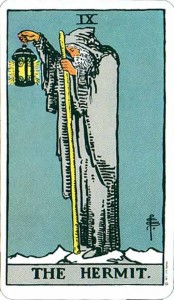 that only remote regions can give. Card number 9 allows our hero traveling through the Major Arcana to either meet or become this humbled figure full of in-sight, as represented by his seeking lantern. A re-evaluation of his journey is required after a run-in with the objectivity of Justice, before he can once again chance the Wheel of Fortune (Card number 10). Consideration of this card allows us all a moment to reflect without being sucked into eternal isolation – the shadow side of the Hermit. Fresh from a (hot) visit from her hometown of Joshua Tree, California, Cyndera shares fresh inspiration after encountering an old friend who embodies the Hermit archetype. Julienne takes us on a tour of the hermitic nature of the American literary Renaissance along with some insights on the Hermit from film and popular culture.
that only remote regions can give. Card number 9 allows our hero traveling through the Major Arcana to either meet or become this humbled figure full of in-sight, as represented by his seeking lantern. A re-evaluation of his journey is required after a run-in with the objectivity of Justice, before he can once again chance the Wheel of Fortune (Card number 10). Consideration of this card allows us all a moment to reflect without being sucked into eternal isolation – the shadow side of the Hermit. Fresh from a (hot) visit from her hometown of Joshua Tree, California, Cyndera shares fresh inspiration after encountering an old friend who embodies the Hermit archetype. Julienne takes us on a tour of the hermitic nature of the American literary Renaissance along with some insights on the Hermit from film and popular culture.Light Aspect: Integration, Introspection
Shadow Aspect: Isolation
Examples of the Hermit:
Henry David Thoreau (esp his book Walden) there is a great podcast about Thoreau from the public radio program ‘To The Best of Our Knowledge’.
Buddhist teacher, Pema Chodron, author and Catholic mystic Thomas Merton, poet Emily Dickinson, naturalist John Muir Also of interest is the Hermitary website filled with even more insight on the Hermit archetype.
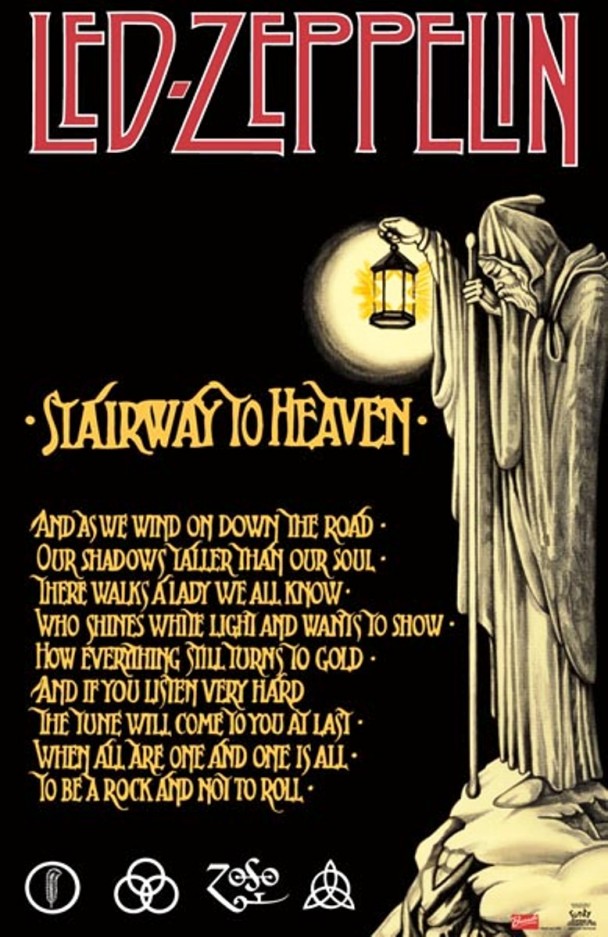 I also found it amusingly appropriate that Led Zeppelin used the image of the Hermit for their single ‘Stairway To Heaven’ which carries lyrics capturing the ideas of the Hermit’s quest.
I also found it amusingly appropriate that Led Zeppelin used the image of the Hermit for their single ‘Stairway To Heaven’ which carries lyrics capturing the ideas of the Hermit’s quest.
In film:
Robert Duvall in Get Low (2009)
Emile Hirsh in Into the Wild (2007)
Bill Murray in Lost in Translation (2003)
Forest Whittaker in Ghost Dog (1999) (Combination of Hermit and Warrior)
Key Words:
• Introspection —– Silence —– Guidance —– Reflection
• Solitude —– Looking inward —– Reclusion —– Being quiet
• Inner search —– Deep understanding —– Isolation
• Distance —– Retreat —– Philosophical attitude
Like what you heard on the podcast? Share us on Facebook (handy button below) or give us a review on iTunes.
Justice, The Judge and Mediator
Listen Now! or Subscribe in iTunes
 is number 8 of the Major Arcana.
is number 8 of the Major Arcana.We are asked to leave the subjectivity of the Hero for the wisdom and objectivity of the Judge and Mediator archetypes.
Recommended reading:
Jung and Tarot: And Archetypal Journey by Sallie Nichols
Examples of the Judge in Film/TV/Drama:
Empowered/Light Aspect
- Gene Hackman in Mississippi Burning ( 1988)
- Gregory Peck in To Kill A Mockingbird (1962)
- Anthony Hopkins in Amistad (1997)
- Meryl Streep in Iron Lady (2011)
- Hugo Weaving in The Lord of the Rings (2001)
- The character of Oberon in Midsummer Nights Dream
Un-empowered/Shadow aspect:
- Raymond Massey in East of Eden (1955)
- Lena Headey as Cersiei in Game of Thrones (HBO 2011/12)
- Tsai Chin in Joy Luck Club – both shadow and light (1993)
Like what you heard on the podcast? Share us on Facebook (handy button below) or give us a review on iTunes.
Meet Your Dating Survival Guides
Dating can feel like a trip to the amusement park, filled with excitement, ups, downs and the occasional sense of inertia. Certain archetypes can help serve as guides for keeping grounded while amidst the thrills and spills of dating life. So far I’ve written about archetypal attraction based on shared patterns, paired needs and romantic chemistry. Now it’s time to dig into some of the archetypal characters that will likely show up for everyone dating. They also can play into why some people don’t even dip their toe into the dating pool. I call these our Survival Archetypes. They are roles we take on when we feel vulnerable as well as ones that can guide us to authentically being ourselves.
We all work with the survival archetypes. Some people are so in the thrall of the unempowered aspects of them that they have a hard time seeing beyond their negative effects. It’s my hope to turn this around a bit. Each archetype should be used as a guide – not a way to judge yourself poorly. In fact they are an excellent way of spotting how you might judge yourself and how to make a more empowering choice.
The four dating Survival Guides are: The Victim, The Prostitute, The Child and The Saboteur.
The names of these archetypes might seem to some harsh or intimidating, but that’s because we tend to know them only by their pathology. They also contain a wonderful possibility that often gets overlooked.
I launched this series on dating by recommending attention as a key for getting clear on who you are and who you want to form a relationship with. Paying attention to your thoughts and behaviors by seeing them as patterns helps you get clear on your options. That clarity can get lost however if we use the pattern to judge ourselves poorly or condemn ourselves.
The technology of using archetypes is best served with a practice akin to Jon Kabat-Zinn’s Mindfulness Based Stress Reduction (MBSR) coupled with self-compassion. The basis of MBSR is moment-to-moment non-judgmental awareness. Awareness and self compassion are powerful practices in life and especially in the necessarily vulnerable experience of dating. Developing awareness and self compassion practices can make all the difference in being able to be authentic (you know, the real you) and attract the right people into your life. This isn’t just me talking, there are increasingly more scientific studies showing how awareness and self compassion are amazing for us in every aspect of our lives, from reducing stress, relieving pain and bringing greater resilience and happiness to practitioners. Two other pioneers in this field are Kelly McGonigal, Phd and Kristen Neff, Phd. Neff’s book Self-Compassion: Stop Beating Yourself Up and Leave Insecurity Behind is an excellent starting place.
This series will focus on each of the four survival archetypes as they might show up for a single person looking to meet a significant other. They are of course useful to those already in relationship or those thinking about ‘getting back out there’. I’ll share ideas on ways to bring awareness to your actions and choices in a way that helps you enjoy yourself more in the process of creating new relationships. If we are enjoying ourselves from the beginning, we’ll be less prone to heap expectations on the person we are dating and vice versa. Sound good? Look for updates soon and links will be added to the list above so you can jump to the next exciting article.
The Hero and The Warrior
Listen Now! or Subscribe in iTunes
The Chariot: Hero, Warrior, and the Crossing of the First Threshold
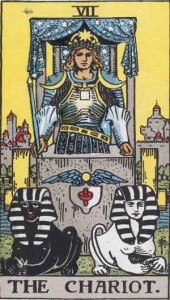 The Eighth edition of the Archetypal Tarot Podcast explores the movement and meaning encompassed by the Chariot, card number 7 of the Major Arcana. For the first time, we see our hero of the deck breaking beyond the boundary of the Emperor’s domain. In the last stage, the Lovers, he was faced with a choice and is now thrust down a particular path, reminiscent of the “crossing of the first threshold” of Joseph Campbell‘s stages of the hero’s journey. Will all the wisdom of the figureheads from the previous stages help our hero in the real world? Julienne Givot connects in the ancient story of Arjuna as he faces the fears of battle under the guidance of Krishna. Cyndera Quackenbush illustrates the shadowy consequences of the heroic impulse by recounting the myth of Phaeton. The Chariot card allows us to find our own courage in the face of bold undertakings while keeping an eye on the dangers of hubris.
The Eighth edition of the Archetypal Tarot Podcast explores the movement and meaning encompassed by the Chariot, card number 7 of the Major Arcana. For the first time, we see our hero of the deck breaking beyond the boundary of the Emperor’s domain. In the last stage, the Lovers, he was faced with a choice and is now thrust down a particular path, reminiscent of the “crossing of the first threshold” of Joseph Campbell‘s stages of the hero’s journey. Will all the wisdom of the figureheads from the previous stages help our hero in the real world? Julienne Givot connects in the ancient story of Arjuna as he faces the fears of battle under the guidance of Krishna. Cyndera Quackenbush illustrates the shadowy consequences of the heroic impulse by recounting the myth of Phaeton. The Chariot card allows us to find our own courage in the face of bold undertakings while keeping an eye on the dangers of hubris.Recommended reading:
Way of the Peaceful Warrior by Dan Millman
The Seven Spiritual Laws of Superheroes: Harnessing Our Power to Change the World by Deepak and Gotham Chopra
King, Warrior, Magician, Lover: Rediscovering the Archetypes of the Mature Masculine by Robert Moore and Douglas Gillette
Examples of the Hero in Film/TV:
Empowered/Light Aspect
- Keanu Reeves as Neo in The Matrix (1999)
- Mark Hamill as Luke Skywalker in Star Wars (1977)
- Emma Thompson as Vivian Bearing in Wit (2001, TV)
- Judy Garland as Dorothy in The Wizard of Oz (1939)
- Ed Asner as Carl Fredrickson in UP (2009)
Shadow aspect:
- Jeremy Renner in The Hurt Locker (Hero/Warrior both shadow and light) (2010)
- James Franco as The 2nd Green Goblin in Spiderman 3 (2007)
Examples of the Warrior in Film/TV:
Empowered/Light Aspect
- Harrison Ford in Star Wars (1977)
- Jake Gylenhall as Anthony Swofford in Jarhead (2005)
- Sarah Michelle Geller in Buffy the Vampire Slayer (1997, TV)
- Shirley MacLaine in Terms of Endearment (battling cancer) (1983)
- Zoe Saldana as Nyteri in Avatar (2009)
- Katee Sackoff as Starbuck in Battlestar Gallactica (both shadow and light aspects, 2004, TV)
Shadow Aspect:
- Vin Diesel in the The Chronicles of Riddick (2004)
- Stephan Lang as Colonel Quaritch in Avatar (2009)
Like what you heard on the podcast? Share us on Facebook (handy button below) or give us a review on iTunes.
The Lovers – Balance and Companionship
Listen Now! or Subscribe in iTunes
 The Seventh edition of the Archetypal Tarot podcast reveals our heroic Fool at his/her first genuine choice point represented by card number six, The Lovers. The Lovers brings into focus this important first choice and reminds us that love, balance and companionship are called for. This stage has us examine the archetypes of the Lover as well as the Companion. A reminder to access both our masculine ‘doing-ness’ and feminine receptivity.
The Seventh edition of the Archetypal Tarot podcast reveals our heroic Fool at his/her first genuine choice point represented by card number six, The Lovers. The Lovers brings into focus this important first choice and reminds us that love, balance and companionship are called for. This stage has us examine the archetypes of the Lover as well as the Companion. A reminder to access both our masculine ‘doing-ness’ and feminine receptivity.
Further exploration of the archetype of the Lover: Seizing The Power of The Lover Archetype
Recommended reading:
We: Understanding the Psychology of Romantic Love by Robert A. Johnson
The Eden Project: In Search of he Magical Other by James Hollis
Cyndera recommends: The Lovers Path Tarot set by Kris Waldherr
Archetypes of The Lovers card:
Companion
Lover

The Lovers from the Dreaming Way Tarot
Examples of the Companion in Film/TV:
- Susan Sarandon and Geena Davis in Thelma and Louise (1991)
- Ben Affleck in Good Will Hunting (1997)
- Russell and Dug in the Pixar film UP ( 2009)
Examples of Both Light and Shadow:
- TV Show “Entourage”
- The Hangover
- Bridesmaids (2011)
Shadow or disempowered aspect:
- Eve Arden & Mare Winningham Mildred Pierce (1945 and 2011)
- Winona Ryder in Heathers (1988)
- The Social Network (2011)
Examples of the Lover in Film/TV:
- Dead Poet’s Society especially Neil Patrick Harris and Josh Charles (1989)
- Ewan McGregor in Moulin Rouge (2001)
- Charlie Cox in Stardust (2007)
- Humphrey Bogart and Lauren Bacall in Casablanca (1942)
- Salma Hayek in Frida (2002)
- Cary Elwes in Princess Bride (1987)
- Nicholas Cage in Moonstruck (1987)
Shadow or disempowered aspect:
- Glenn Close in Fatal Attraction (1987)
- Tom Cruise in Vanilla Sky (2001)
- Lupe Ontiveros as Yolanda Saldivar in the film Selena (1997)
- Sandra Bullock in All About Steve (2009)
Like what you heard on the podcast? Share us on Facebook (handy button below) or give us a review on iTunes.
The Heirophant – Seeking Higher Guidance
Listen Now! or Subscribe in iTunes
 The Sixth edition of the Archetypal Tarot Podcast explores the meaning of the Hierophant card of the Tarot as a stage of a journey where one examines the traditions, organizations and structures of one’s life as well as how and who to seek higher guidance from. The Hierophant, also called the Pope card in traditional Tarot decks also symbolizes the archetypes of the Priest, Guide, Guru, Shaman,Wise Man and Messiah. Truly a symbol of higher wisdom, this card is a symbol of seeking greater or spiritual knowledge.
The Sixth edition of the Archetypal Tarot Podcast explores the meaning of the Hierophant card of the Tarot as a stage of a journey where one examines the traditions, organizations and structures of one’s life as well as how and who to seek higher guidance from. The Hierophant, also called the Pope card in traditional Tarot decks also symbolizes the archetypes of the Priest, Guide, Guru, Shaman,Wise Man and Messiah. Truly a symbol of higher wisdom, this card is a symbol of seeking greater or spiritual knowledge.
Archetypes of the Hierophant:
God
Wise Man
Priest
Shaman
Guru
Guide
Messiah
Examples of the Heirophant Archetype’s light aspects in Film:
- Yoda in the Star Wars series
- Laurence Fishburne “The Matrix” trilogy (Priest/Wiseman)
- Ben Kingsley in “Gandhi” (1982)
- Pat Morita in “The Karate Kid” (1984)
Examples of the Heirophant Archetype’s shadow aspects in Film:
- Paul Dano in “There Will Be Blood” (2007)
- Tom Cruise in “Magnolia” (1999)
- Robert Mitchum in “The Night of the Hunter” (1955)




